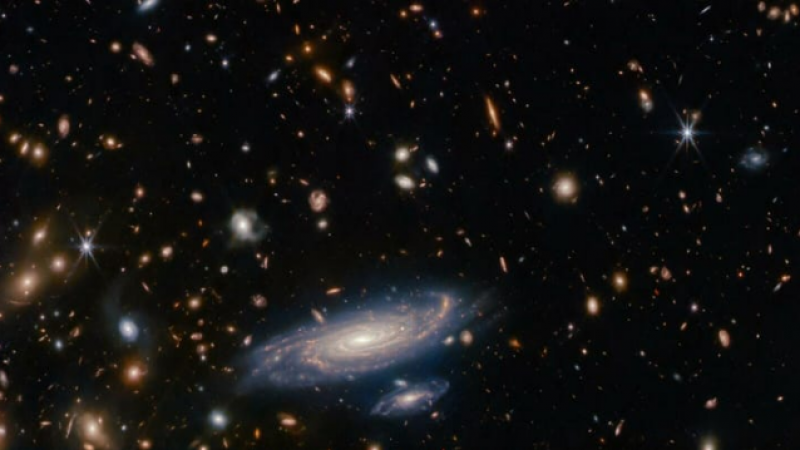
USA: A spiral galaxy is highlighted in a new image from NASA's James Webb Space Telescope (JWST), which shows a dense field of galaxies and bright stars.
Over a billion light-years away in the constellation of Hercules, there is a spiral galaxy with the designation LEDA 2046648. The galaxy has been captured in such fine detail that each of its spiral arms can be clearly seen, which is amazing.
The spectacular images captured by the $10 billion Webb telescope, which has been conducting scientific observations since July 2022, have astounded the entire world.
Also Read: The iOS client for Twitter competitor Nostr is now available on the App Store
Webb's most recent image shows amazing details of a far-off spiral galaxy. Six-pointed diffraction spikes, a distinctive feature of JWST observations, are visible as a signature of the stars and galaxies.
The spiral galaxy LEDA 2046648 is visible in the image at an oblique angle, and a nearby galaxy that is about one-quarter the size is directly below it. The spiral arms of both galaxies are illuminated because they contain regions of star formation and have brightly glowing cores. Stars and galaxies in the distance can be seen in a variety of hues, but primarily orange.
Also Read: NASA's James Webb Space Telescope has resumed operations following an instrument malfunction
The Webb telescope's onboard Near-Infrared Camera (NIRCam) took this galaxy-filled photo while calibrating its Near-Infrared Imager and Slitless Spectrograph (NIRISS) instrument by observing a well-known object, a white dwarf star known as WD1657+343.
Parallel observations with NIRCam are also supported by NIRISS. This enables astronomers to analyse the data from the two instruments, compare them, and assess NIRISS's performance.
In order to learn more about the formation, evolution, and composition of distant, old galaxies, one of the main objectives of the Webb telescope is to observe them.
In addition to being smaller than the spiral galaxy LEDA 2046648, some of the other galaxies visible in the image are also farther away, providing a more comprehensive view of the cosmos.
Also Read: Apple will introduce a collapsible iPad in 2024
Astronomers can compare far-off galaxies to those that are located closer to our Milky Way thanks to Webb's infrared capabilities. This advances our knowledge of how galaxies developed into the current universe's structures.
Webb can learn about distant galaxies' chemical makeup and shed light on how heavy elements were created and accumulated as galaxies evolved by probing them.